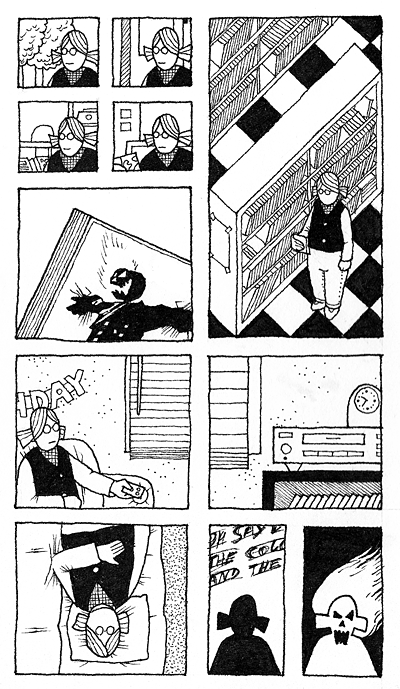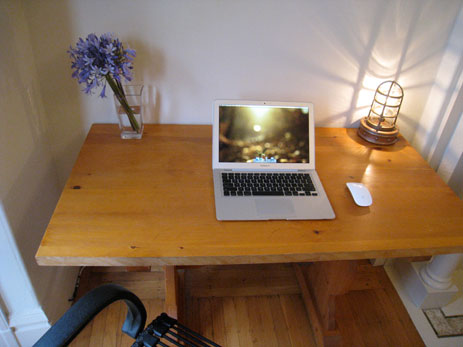I
The problem: You’re online with your iPhone or iPad and you come across something which you want to read, but at the moment you don’t have the time.
The solution: You send the article to Instapaper. It is now bookmarked, and when you have time you open up Instapaper (on your iPhone, iPad, or computer) and the article you wanted to read is ready.
II
Another problem: You’re online with your iPhone or iPad and you come across something you want to do, but at the moment don’t have the time to do it (or perhaps because of the device you’re on you don’t have the ability).
The solution: Something that, so far as I can tell, does not yet exist: A cloud-based, task-management bucket where you can throw links, tips, bookmarks, and the like — all of which are actionable. It would be able to receive these tasks via in-app services, email, or a browser bookmarklet. And I vote we call it ttttask.
Similarly to the way Instapaper as a service is for articles you wish to read later, ttttask would be a service for things you wish to do later.
III
It seems as if every day I bump into things while reading feeds, Twitter, the Web, or email — things I want to download, buy, research, and etcetera. But often I’m unable to take action at that moment. How then can I save it for later?
When on my Mac I use AppleScripts and built-in triggers to throw these items directly into Things. But on my iPhone and iPad there is no such solution. And since even the smallest pebble will make expensive Reeboks uncomfortable to run in, this sore spot of how to handle all the tasks I bump into when on my iPhone or iPad has got me thinking…
We need a universal, cloud-based bucket to throw these items into. A bucket that talks to all our current software instead of asking us start using new tools.
So far as I can see it there are two really great, though currently non-existent, solutions:
- A services menu for iOS. If this were a reality, people with the Things app installed on their iPhone and/or iPad could have a “Send to Thing” service available within all their other apps. Thereby allowing them to send tasks into Things on their iPhone directly from Twitter, Reeder, Mail, Mobile Safari, and more.
Some iPhone apps have worked around this by talking to one-another with the in-app APIs. You can save drafts of tweets into Birdhouse from Twitter’s iPhone app, or service reminders in Gas Cubby can be sent into Appigo’s Todo. But these cross-app functions take you out of your current context and sending you to another app — not exactly the ideal way to quickly save something for later.
- Another solution would be this universal, cloud-based bucket and its open APIs: ttttask. The caveat is that it would only be as useful as it is available. This is a big slice of why Instapaper is so great: all the various apps which have adopted it as an in-app service so you can hook into your Instapaper account right from within the app.
Ttttask’s APIs would allow for apps to toss items into the bucket and get them out. It would be able to receive these tasks via in-app services, an email, or even a browser bookmarklet. It would be able to pipe your to-do list into other applications. And if it got really fancy, tttask could even work as a syncing agent for other to-do apps to utilize. Then, regardless of which task-management software you use (and even regardless of what OS), you would be able to sync your software with what is in ttttask.1
These aforementioned solutions are tall orders. And unfortunately neither of them are a reality (yet). In the meantime here are some workarounds I’ve considered to at least alleviate the pebble of in-app task capture on iOS.
- Set up a second Instapaper account. Since Instapaper is basically a long list of items which can be added to from so many other apps, it would seem to be a great interim solution. But there are two problems with using Instapaper as a Do Later list instead of a Read Later list. For one, Instapaper is built for headlines and article links, not tasks. So even though someone could technically use it as a task list, it is certainly not intended or suited for that purpose. Secondly, iPhone and iPad apps only let you access a single Instapaper account at a time. So even if I had two accounts I could only access one of them.
-
Use a bookmarking service other than Instapaper. Such as Delicious, Pinboard, or Read It Later. This could work, but again, it suffers from the same problem as above, in that these are services designed for bookmarking articles and links. Also, if you don’t already use one of these bookmarking services then you’ve just create another inbox to be aware of. I try hard to keep the number of inboxes I need to check at a minimum.
-
Use one of the many online to-do apps that let you create tasks via email. Such as Remember the Milk. Not to be a Negative Nancy, but this would again mean another inbox to check. Moreover, there are no online task management applications with services supported by other iPhone and iPad apps. And so if I am going to go through the trouble of emailing a task it might as well be sent to an inbox I already check.
-
Email the tasks to Simplenote. With the purchase of a premium Simplenote account you get a private email address which can be used to send notes into your Simplnote list. For those who use Simplenote to manage their task lists this just may work well. I, however, use Simplenote (and Notational Velocity) all throughout my day for writing and other note taking. I would prefer not to dilute my list of notes with items I am intentionally trying to deal with later.
And so the solution I’m currently using is perhaps the most obvious of all: email the task to myself.
I set up a new email address. One that is easy to type and is quite unique so I don’t send to someone in my contacts list on accident. (I’m using something along the lines of [email protected] — a couple taps on the “t” button brings this address right up.)
Furthermore, I’ve created a server-side email rule that moves all emails to that address into their own folder. Having the rule be server-side ensures that the emails don’t show up in my inbox on my iPhone or iPad. Moving them to their own folder keeps them out of my way until I’ve got time.
I use Things, and with a little bit of AppleScript and a rule in Mail on my Mac incoming task emails can be dumped into my Things inbox. (If you use OmniFocus you can enable Mail Hooks so that OmniFocus grabs the emails for you.)
However, even this solution has a two-fold downside. For one, it is tedious to always have to email yourself things to do, as opposed to using the quick-access, built-in services that apps like Twitteriffic, Tweetie, Reeder, and others have. Secondly, items don’t end up in my actual to-do app, Things, unless my Mac is turned on, connected to the internet, and both Mail and Things are running.
A service like ttttask has a lot of potential. Imagine being able to switch task-management apps like you switch Twitter clients; or sharing a to-do list with others even if you use different software? 2 But as I said, it would only be as useful as it is available. So building it comes with two big challenges: infrastructure and adoption.

